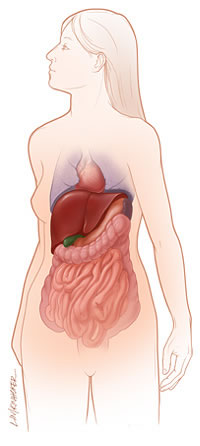The term “viscera” refers to the inner organs of the body, such as the stomach, lungs, colon, glands, and other functional structures inside the body. The viscera are surrounded and supported by the ligaments and fascia, which is a slightly mobile, laminated sheath of connective tissue.
Physical, emotional, and metabolic stress can cause the ligaments and fascia to tighten, which in turn creates restriction and pain in all that it surrounds. Through the use of Visceral Manipulation techniques, the therapist assesses the quality of tension in the visceral fascia. The therapist then applies specific, gentle pressure in order to interrupt the cycle of chronic tension, pain, and dysfunction. The therapeutic movements of Visceral Manipulation are never high-velocity, rough, or invasive.
Visceral Manipulation, often used in conjunction with other healing modalities can be helpful in improving the digestion, energy level, and mood, as well as in re-regulating bodily systems. It may benefit people of all ages, from children to the elderly.
At the Asclepeion Center, we see Visceral Manipulation techniques as an important application of the Dynamic Colloid Fluid Model of the body. We use Visceral Manipulation to assess and treat bodily tissues that have retained the imprint of trauma or stress—tissues that are literally “holding on” to pain producing patterns. The gentle interventions of Visceral Manipulation can release this imprint and allow the tissues to regain a more normal state, alleviating tension, pain, and stress.
Related Links:
See article, “When Other Chronic Pain Therapies Fail, Visceral Manipulation May Help,” by Ronald S. Murray


